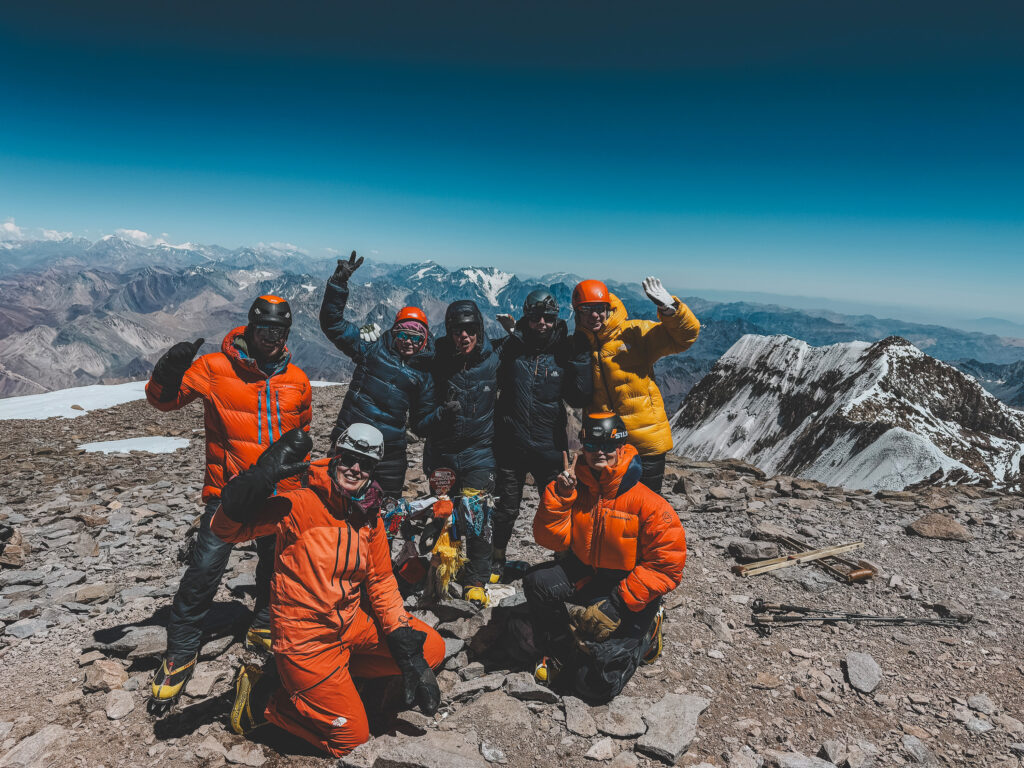
I´m back from guiding our first All Women Aconcagua expedition! It was a dream. When I imagined how it could be, when I created the expedition – this was even better. We had an amazing group of women from all over Europe. Everyone super nice, helping each other and built that team spirit.
The expedition started in Mendoza (and no one had lost their luggage! This is often a problem in South America and this is the first expedition where no one had lost luggage!)
I travelled there from Chile where I pre-acclimatised a little bit, climbing with my friend Lotta. I met up with my guide partner Vito. I know he is not a women but he share the same guide style as me and values and I trust him with my life. He have 20 years of experience on Aconcagua. 47 summits. He is a professor at the mountain guide school in Mendoza. An EMT. A rescue specialist and he have worked as a ranger in Aconcagua park for many years. He is the nicest and most competent guide I know on the mountain. He is so humble. Not macho (and that´s the most important). And all over the mountain, everyone we met who was a guide or a porter always said to us ”Vito is the best”. And he was. He treated me like an equal. We made decisions together. He always introduced me as his guide partner. And compared to last year this was night and day. Last year was a nightmare. This year was a dream.
After a gear check and welcome dinner for the team we went to Las Cuevas for some acclimatisation before going into the park. The permit is only 20 days and we want to use all of those days for our climb. One thing I have noticed over the years is that many people get high altitude illness in basecamp. Basecamp on Aconcagua is at 4200 m and the day before you only sleep at 3200 m so the ascent is quite big. To avoid this we have two nights at 3000 m in Las Cuevas before the climb. The second day we did a acclimatisation hike to 4000 m to boost the acclimatisation even more. And it worked very well. No one had problems with altitude in basecamp on the expedition! Not on mine or our other expedition we had in December. Many teams don´t include this pre-acclimatisation (or maybe just do one night) but I think it´s important because it gives the team a better chance.
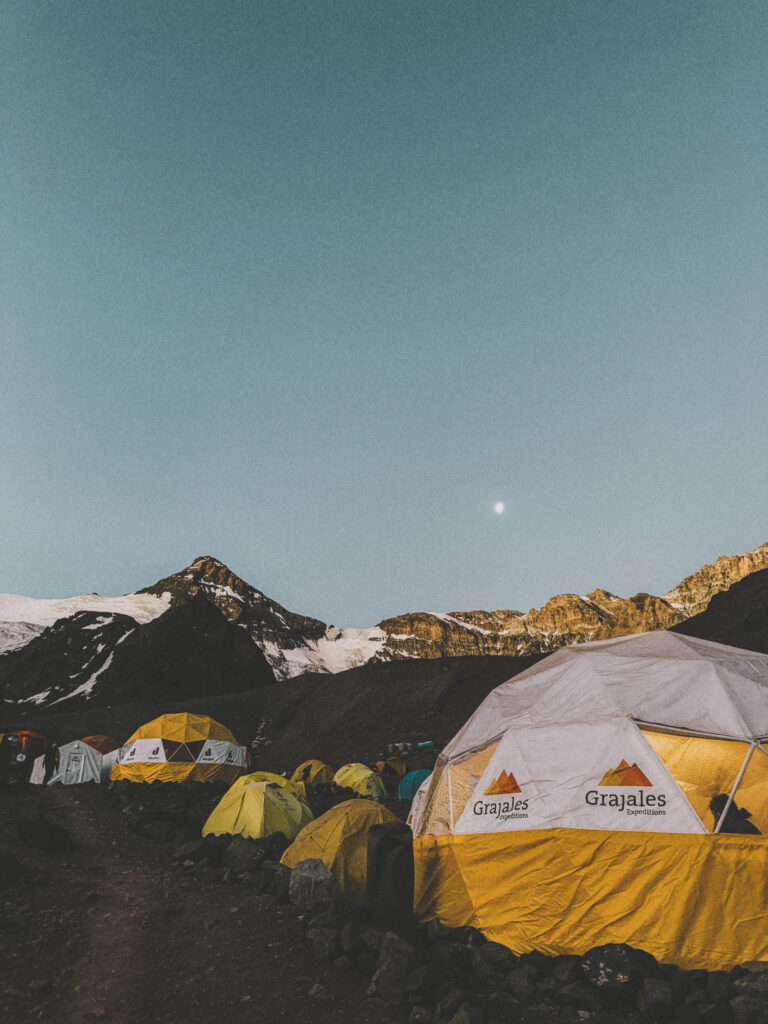
The hike to basecamp takes three days on the 360 route. I prefer the 360 route because you get to experience the whole mountain. There is less people. It´s more beautiful. You don´t go the same way up as down. And everyone I ever had in my team always says after the expedition they were glad they did the 360 route instead of the normal route. They understand that going up and down the same scree slopes on the normal route is not so much fun (even if it´s a little bit shorter).
The camps on the way to high camp have really improved their standard this year! We had hot showers in Casa De Piedra and wifi in all camps. That was not there last year. Crazy.
Arriving to basecamp is always a pleasure. You are greeted with your own dome tent and refreshments. The hike the last day is 1000 m ascent from 3200 m to 4200 m so it´s hard work. We use Grajales as our local partner. They are a premium company and the service and standard in basecamp is high. I have used two other companies on the mountain before because I wanted to test everyone to find the best partner. What I like about Grajales is that most things are included: Hot showers, wifi, no limit on luggage for basecamp etc. Even drinks in basecamp. With many other companies everything cost extra. Last year we got vouchers for wifi that we paid for. After 15 minutes they were finished and we had to pay new vouchers (that lasted 15 minutes before they ended). It was very frustrating (and expensive).
In basecamp we had a rest day the day after we arrived. We did our own medical check ups with the team before meeting the doctor (it´s obligatory to to a health check with the doctor after your carry round to camp 1). We checked the team many times during the expedition. Blood pressure, oxygen levels, heart rate, listening to the lungs and Lake Louise scale. We wanted to make sure everyone was feeling ok and it would be safe to continue.
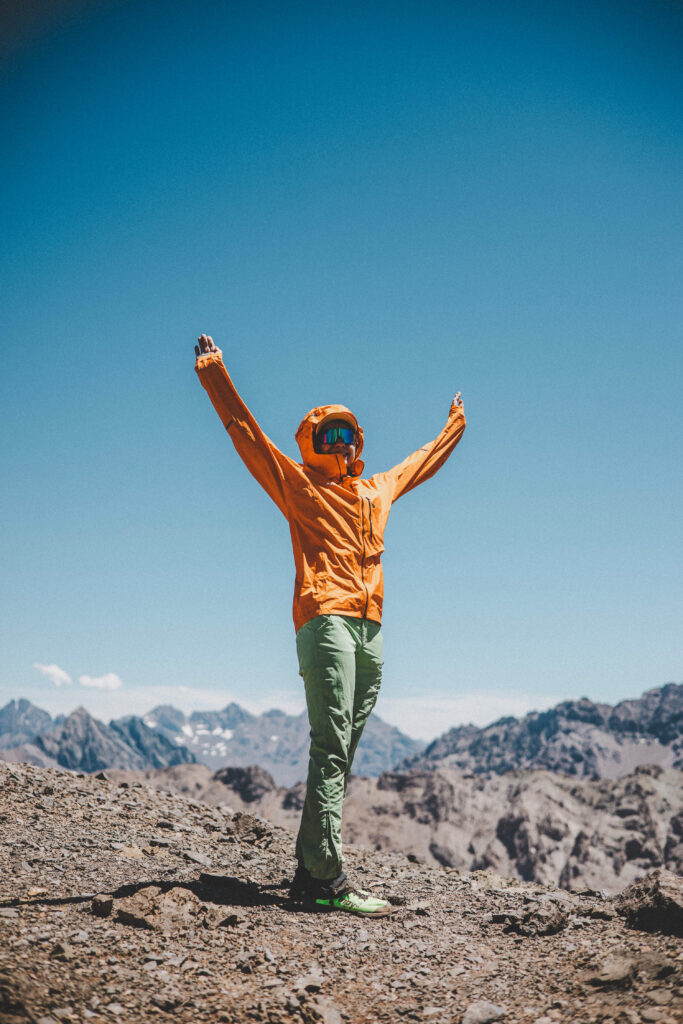
We also had our second downhill workshop. We had one in Las Cuevas too. I don´t see many other guides doing this with their team and of course it depends on the teams experience but this was so good! Most people are used to walking on flat. If they live in a city they often walk on flat streets all their life. Many people are not so used to moving in steep uphill and downhill terrain. Specially not scree as we have a lot on Aconcagua. But after two workshops teaching the team techniques to move more efficient and safely downhill we saw huge improvements that really came to use on summit day. This was so good!
We also used the rest days for washing, knitting, hanging out, doing a mountain quiz and taking a nice hot shower. I went for y first high altitude run. Only 3 km but it was really hard when running uphill at 4200 m! Downhill was no problem tho. My guide partner Vito is a runner and last year he did Horocones – camp 2 – Horocones while fasting as a first try (he is doing research on fasting on high altitude). This year he wanted to try Horocones – summit – Horocones while fasting.
We did a carry round to camp 1 at 5000 m. The first carry round is always hard. It´s a new altitude and you have a heavy backpack. But the team did great! Always so positive and supporting of each other.
After 4 nights in basecamp it was time to leave the comfort. I always divide an expedition into different parts and now the tough part will start where we carry everything ourselves and are independent on the mountain. Our expedition is more independent because I want the participants to learn how to become self sufficient on the mountain. I want them to learn how their body works, what they can do, how things feel – even carrying a heavy backpack. I want them to learn to take care of things themselves. Like putting up their own tents in high winds, melting their own snow, surviving in a tough environment. I want them to build mountain experience for future adventures. Not have everything served. Of course us guides are there answering all questions, showing how to do things, teaching the team everything they need & want to know. But I also feel it´s important to be able to feel ”I did this” after the expedition.
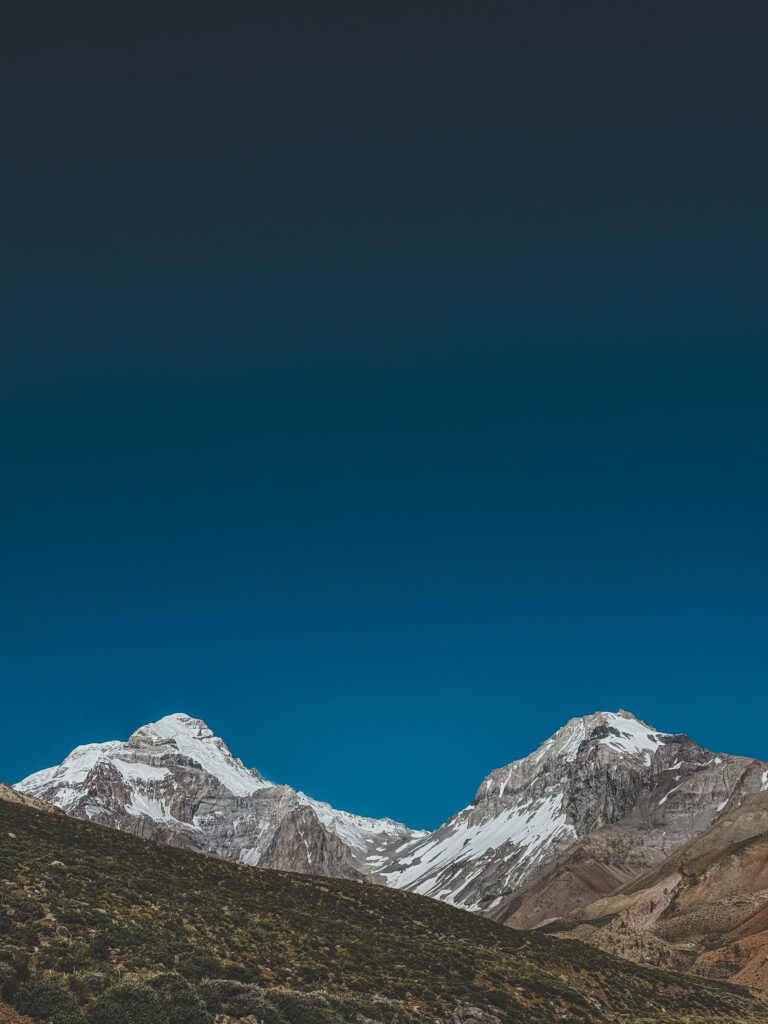
Those who wants full service have plenty of options to choose an expedition with more support that is less independent. This year I saw many climbers using oxygen too. But it´s not my style. I like for people to develop. I think developing and learning new things is important to humans.
After two nights in camp 1 and a carry round to camp 2 it was time to move to camp 2. So far everything was on planned schedule. Camp 2 is a really nice camp. Located at 5500 m. Beautiful views and more protected from the wind than the other camps. Here is where you stay until it´s time for the summit bid. We would stay there 7 nights. Possibly a new record for an commercial expedition. Let me tell you everything!
We had the same schedule from entering the park as a local and an American expedition. So we got some new friends in camp that we were hanging out with on a daily basis. It was one really big group with 12 participants (the local one) and another mid sized group with around 6-7 participants (American). We became good friends and they were supernice. I hanged out a lot with the guides for these groups and it´s always good to get to know other guides. The only thing was that these expeditions did not have as many extra summit days as our group. Most expeditions have only 2 extra summit days. We had 6. And that can make a huge difference on Aconcagua where hard weather & conditions can last for many days, making a summit bid difficult.
So far we had PERFECT conditions on Aconcagua. Sometimes I told my team ”you have not experienced real Aconcagua winds yet” because weather had been so good. But just as we arrived to camp 2 weather turned to the worse. It was not terrible but 50-60 km/h winds in the forecast is really on the limit.
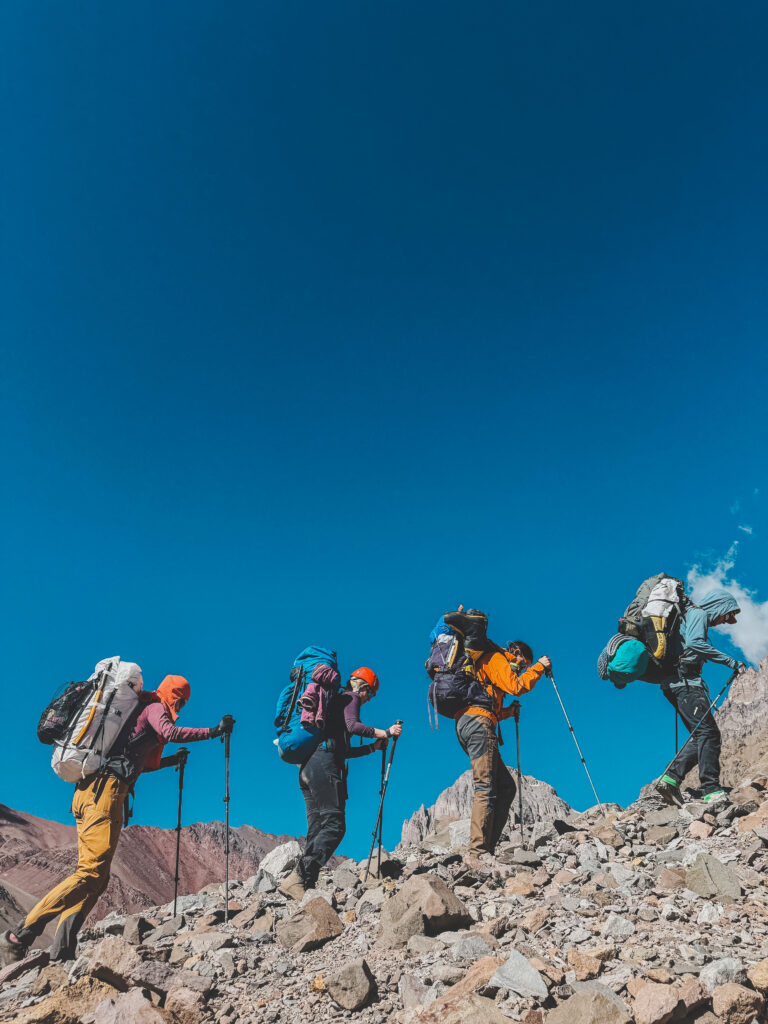
All expeditions had summits planned for Feb 1-2 and for us it was also an option. But with winds of 50-60 km/h we know that it will be really hard. Many times you won´t make it to the summit in those conditions. Or maybe just a few out of a group. It´s not optimal. At the same time waiting for Feb 3 or 4 was impossible because the wind was going up to 100 km/h and the other teams did not have extra summit days either. But our team had. And on Feb 5 the winds would start going down and Feb 6 looked really good with winds of only 30 km/h.
We kept both options opened for as long as possible. A weather forecast a week before isn´t always stabile so the weather for Feb 6 could change… But when we got closer to Feb 1 we had to make a decision. We decided to wait. It was a group discussion and decision. I think in a situation like this it´s important to let everyone in and decide together. Because it would mean we would have to spend 7 nights in camp 2.
Me and Vito talked to many guides and porters and no one have heard of this before. Both med and Vito had only spent 4 nights in camp 2 before. Other guides said it would be hard on motivation. But this year we had wifi in camp 2. That made it possible to stay connected with friends and family. To have entertainment. It was a game changer. We also decided to do something everyday. One day it was training with crampons and ice axe. Another day it was music quiz against a new American team that arrived two days later.
The other teams that we started this expedition at the same time as went for the summit on Feb 1 and 2. We got reports that some made it to the summit (strong!) but some people in the team did not. Like we thought since the conditions were very tough these days. Then the hard winds hit on Feb 3 and 4 and no one went up for a summit bid.
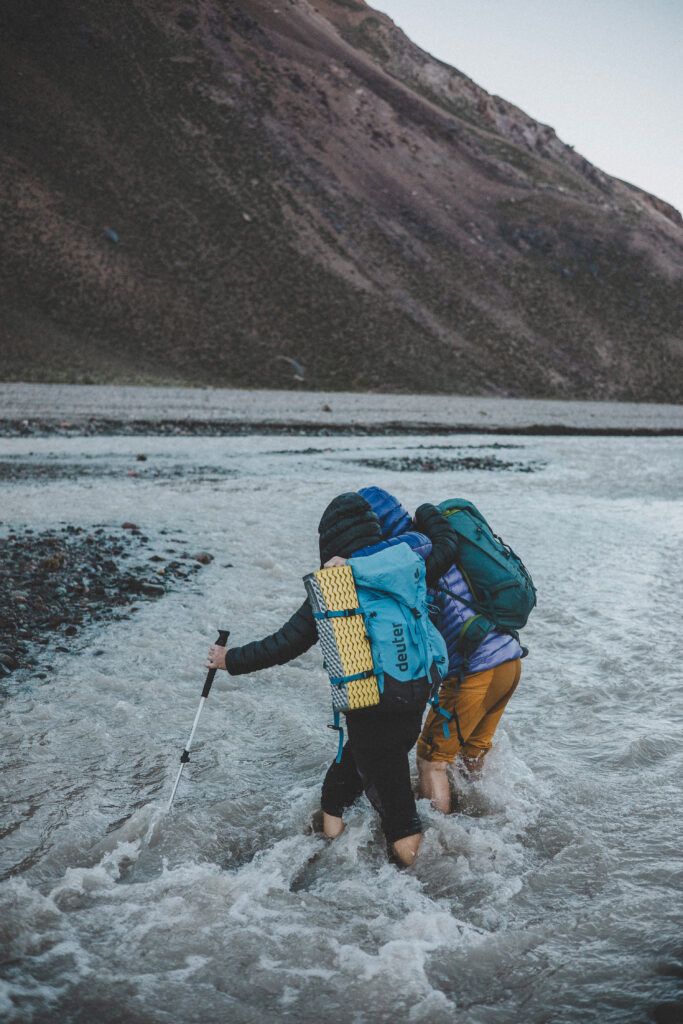
Finally our team got to experience the real winds on Aconcagua! They told me they had never experienced that much wind before. But everyone had pitched their tents really good so we were all safe in camp 2.
The weather forecast was holding up (it had been stabile for a longer time so we were not worried it wouldn´t) and we moved up to camp 3 on Feb 5 like planned.
Camp 3 is at 5950 m so it´s really high. We were very lucky with the weather because it wasn´t even very cold. I have stayed in camp 3 when it´s -25 and super windy and that is terrible. Now it was maybe -10 (tops) so not even that cold or windy. It was looking like we were going to get really good conditions for our summit bid.
We left camp 3 around 4 in the morning on Feb 6. We wanted to start a little bit earlier because we knew we were not the fastest group (and that is ok – one of the goals for this expedition was to not have to rush or push so hard that people had to quit. I´ve seen that too much and it´s not my style. I don´t guide like that. To mne it´s important to have a comfortable pace that fits everyone in the group.) We had a slow and steady pace up. I was walking in the front and Vito was running around, checking that everyone was comfortable. Since it wasn´t so cold we did a few stops to adjust layers.
A small break at White Rock and then up towards Independencia. Here we were met by the sun. It was so nice to warm my feet a little bit. I had battery socks on (lowest level) but no toe warmers since it wasn´t that cold. It was -14 and -23 windchill in the forecast for the summit. At Independencia we discussed with the team that if someone feels like they need to turn around, this is a good place because here one guide can go down and then come up again and catch the team. We were a little bit worried for one of the participants but she wanted to continue so we decided to see how it went. At 6500 m we had to make the call to turn her around.
Turning someone around is the worst. I hate to do it. But it´s always because of safety for this person and the rest of the team.
Vito went back down to camp 3 with her and I continued with the rest of the group. It was time for the traverse.
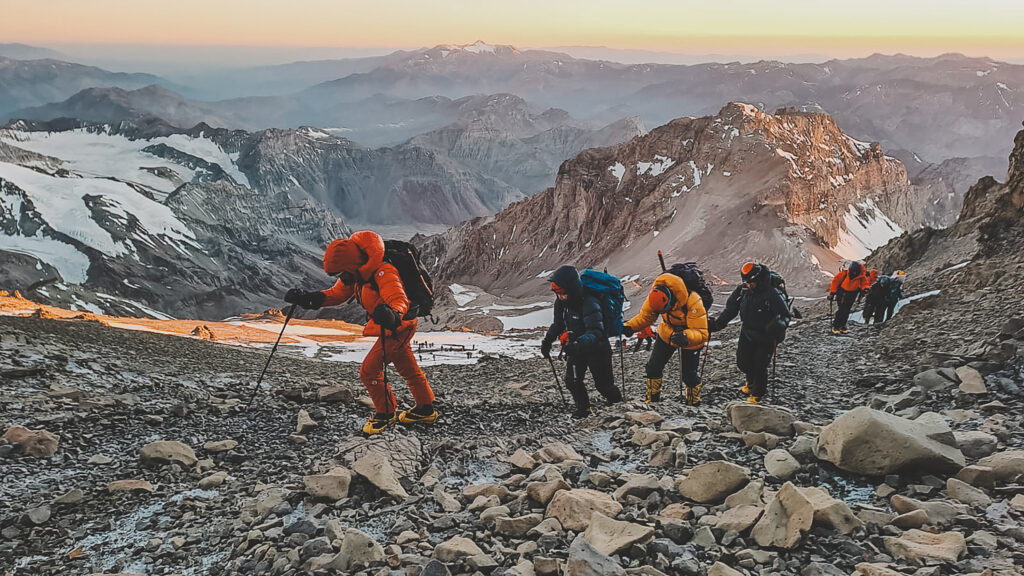
The traverse is always windy with hard gusts so you need to have focus and good balance here because a fall can have huge consequences. It´s in the shadow so it´s cold too. And that makes the snow hard (you will have a hard time to self arrest a potential fall). So this is one of the most dangerous places on Aconcagua.
When I did the summit 2019 it didn´t have this much snow. It was more gravel and scree. Specially after the traverse up to the cave. And then it was more zig-zag. Now it was a snowfield straight up instead. Pretty steep too. So it was really exhausting because it was never ending. But you could see the cave in the sun up there as a goal in front of you. I told the team we would take a long break up there.
We made it to the cave and I radioed down to Vito. He was already on the traverse so he was going to catch up with us pretty soon. We enjoyed the rest, ate some snacks, drank and after around 40 minutes it was time to continue up the canaleta. This is usually a couloir with scree so it was very pleasant that instead we had firm snow to walk on. You are not fast here. Two steps and a breathe. Repeat. Vito catched up with us halfway up the canaleta, before the last traverse. Now it was only 1 hour left to the summit. The whole team gave their everything this last push.
In the end there is a small scramble where you maybe have to use your hands once or twice but then you are on the summit! The top of all of America. The highest mountain outside Himalayas. 6962 m.
Everyone was lying down, trying to catch some rest after the last part. The air is so thin up here. After a little snack and some rest it was time for summit photos. But the celebration have to wait until we are back down from the mountain. This is only halfway.
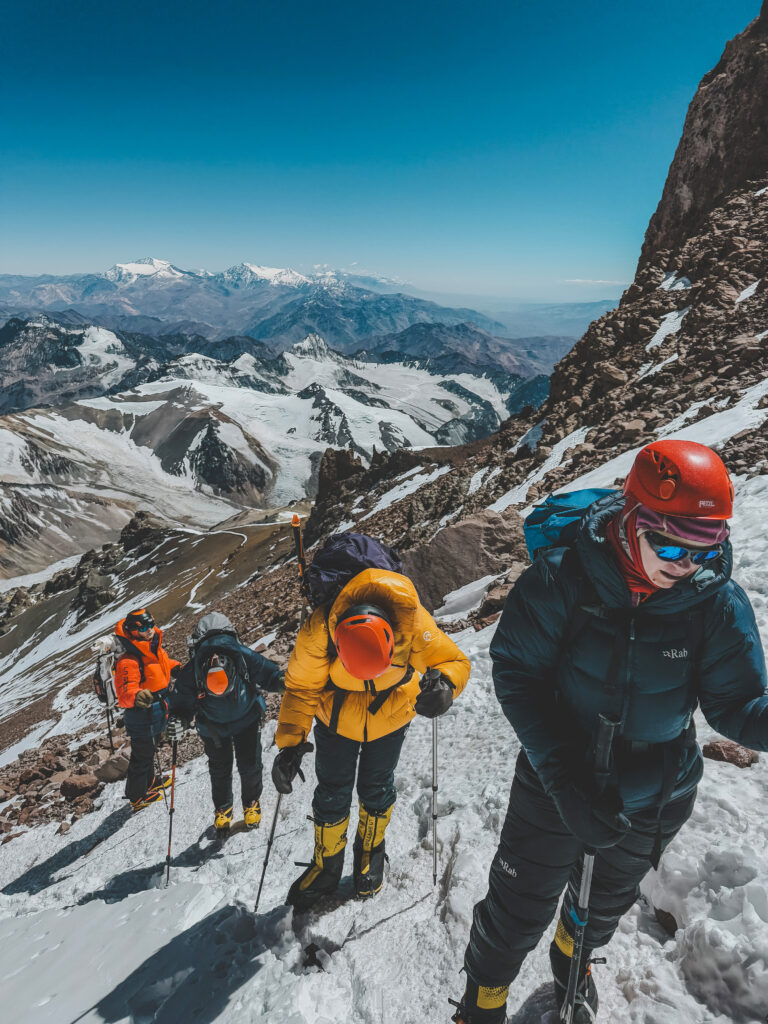
I met Karl Egglof on the summit. He ran up from basecamp in 5 hours and down in half that time with his poles relaxed over his neck. That´s crazy. He is training for a speed ascent on Everest. For us it took 14 hours roundtrip from Camp 3 – Summit – Camp 3.
The way down was smooth. Everyone did great. Our downhill workshops really paid of and the team had saved powers for going down. We came back in perfect time for dinner & an early sleep. Tomorrow we were going back down to basecamp and everyone in the team started dreaming about real food.
Going back to basecamp is hard. Now you have to carry everything at once and our backpacks was around 25 kg. You are also tired from the summit push and the way down is sometimes steep with scree and gravel. But when you are finally in basecamp you can relax and be spoiled by the basecamp team. Refreshments were waiting for us when we arrived. Empanadas, fresh fruit, tortillas, chocolate cake. For dinner we had asado and champange. We even got spoiled with tents in basecamp so we didn´t have to put up our own (it was a mistake but we were happy).
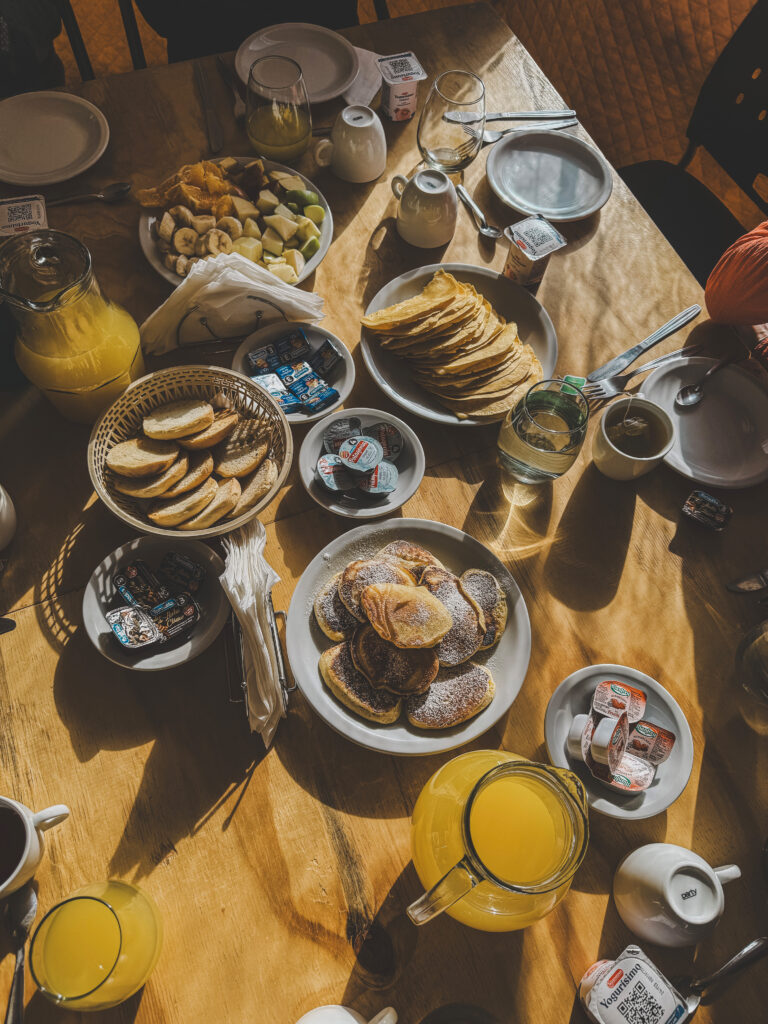
After a nice evening and night in basecamp we had a really good breakfast before it was time to hike out. The hike out is 27 km and I always thought it was quite horrible. Mainly because I have always been in groups where we run down and push too hard. This time when we could walk in an efficient but nice speed I wasn´t even tired in my legs. It wasn´t even hard. What a huge difference these things make. Pacing for your group. We stopped in Confluencia for some pizza and drinks and two hours later we were in a van going back to Mendoza.
We arrived pretty late in Mendoza so it was straight to the shower & bed but the next day we had booked massages for everyone. We also had the best Italian pizza for lunch and celebration with local wine and asado for dinner. It was a really nice way to end this expedition. The next day everyone went back home or on new adventures.
I had the best time with this team. I miss it already. I miss it already. So happy & proud for them. I can´t wait to do it again next year.


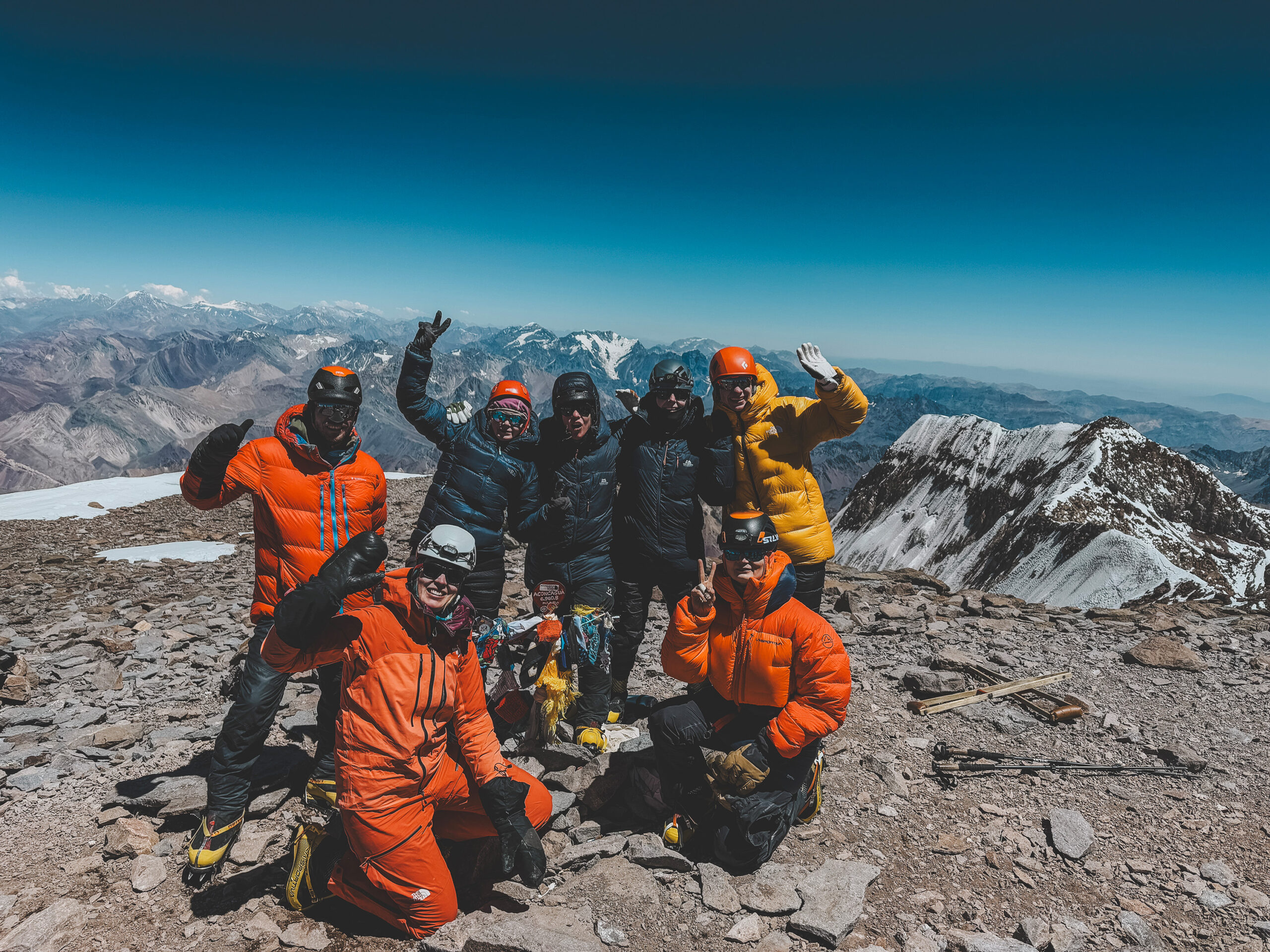
Leave a Reply